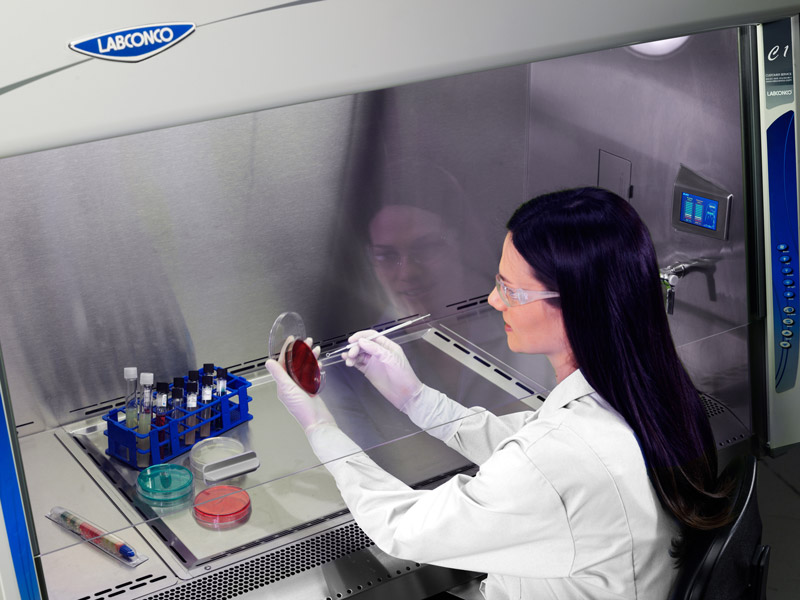How do I know if I’m using the right biological safety cabinet for my process?
Whether you’re working with Ebola, cancer cells, or DNA samples, how can you be sure that you are using the right kind of equipment to protect yourself, your lab-mates, and your precious subject samples? Different biosafety enclosures are built for very different purposes, and using the wrong one could contaminate your samples or, worse, put you in harm’s way.
Know your biosafety level
 The Biosafety Levels (BSLs) of various microbes are designated by the CDC. The levels vary from BSL 1 to 4, with BSL 4 representing the highest risk. Even Class I biological safety cabinets offer good protection to their user for BSL 1 through 3. Unfortunately, they don’t protect the materials you are working with from contamination.
The Biosafety Levels (BSLs) of various microbes are designated by the CDC. The levels vary from BSL 1 to 4, with BSL 4 representing the highest risk. Even Class I biological safety cabinets offer good protection to their user for BSL 1 through 3. Unfortunately, they don’t protect the materials you are working with from contamination.
Class II Biological Safety Cabinets (BSCs) are also recommended for various BSL 1, 2 and 3 applications. Only in rare cases are Class III, glove box type enclosures required. Even in BSL level 4 applications, a combination of environmental and personal protection such as biosafety suits and can be used so that procedures can be conducted in Class II enclosures.
Consult your safety officer regarding your biosafety level, and contact an expert at Labconco if you are unsure of which enclosure is right for your application.
Protecting your samples
Consider how vulnerable your samples are to contamination from room air before selecting a Class I enclosure for your procedure. Penicillin has already been discovered, so unless you’re looking to reproduce Louis Pasteur’s famous accidental revelation, work in a Class II or higher BSC when you have biological samples that require protection from the environment.
Using chemicals in a BSC
Biological hazards and chemical hazards are very different because chemical hazards can be diluted to safe levels, but biological hazards can proliferate from very small quantities. A microscopic sample of Ebola Virus can do a great deal more harm than a similar quantity of cyanide.
Class II, Type B and C* BSCs are designed for use with both chemicals and biologicals. They filter out particles in the air at the cabinet’s exhaust outlet, and exhaust hazardous chemical vapors outside of the laboratory.
Contact a lab equipment expert
You don’t have to be an expert on everything. You already know a lot about the biological materials you handle in your work; you shouldn’t have to be an expert on biosafety cabinets too. If your lab equipment is working well, you shouldn’t even have to think about it.
Contact someone who thinks about biological safety cabinets every single day, the way you think about your own work, before deciding which enclosure is the safest for yourself and for your samples.
For more detailed information on Biosafety Cabinets, visit BSCno-brainer!
| chevron_left | 6 major differences between North American and European BSC design standards | Articles | Does lab equipment longevity really matter? | chevron_right |






